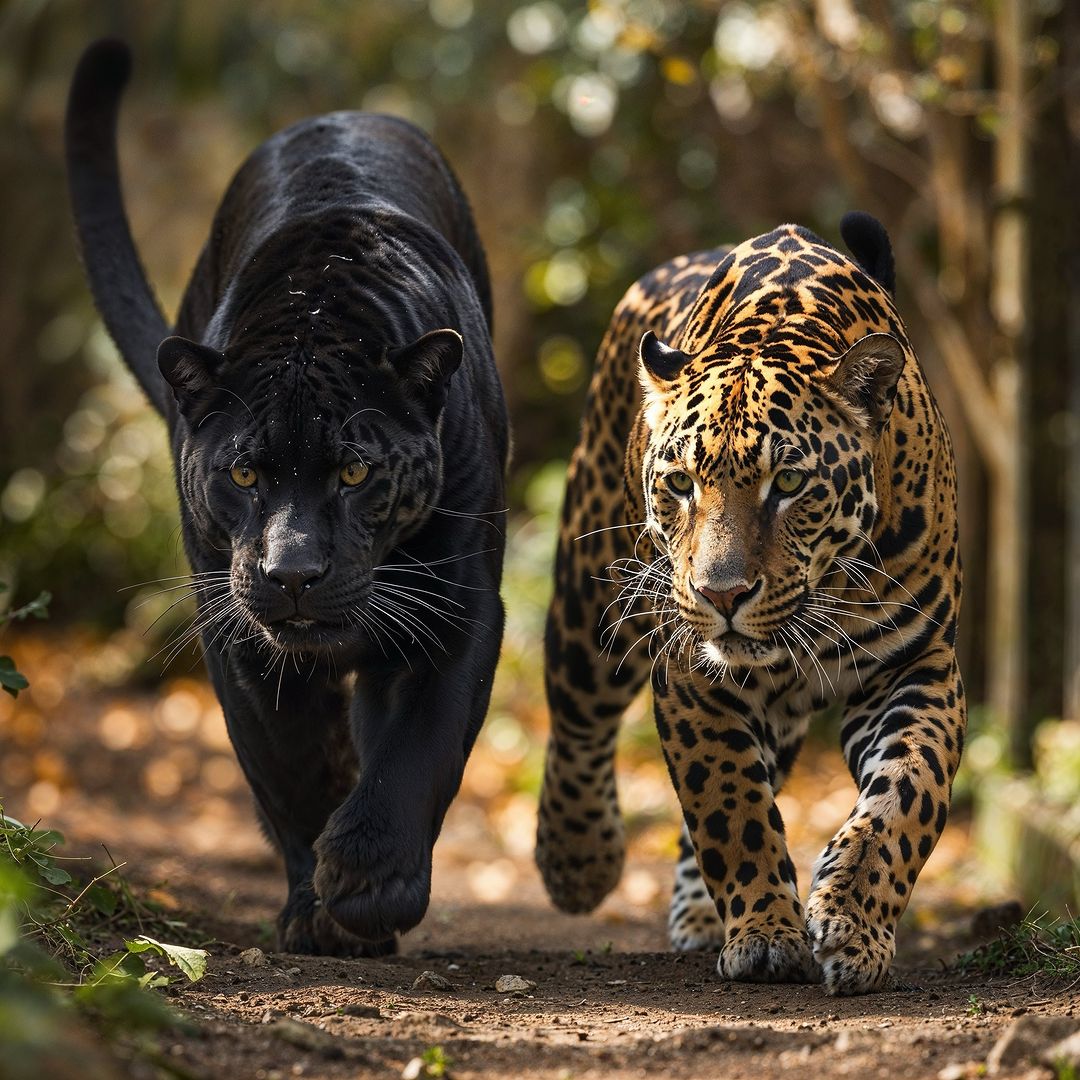See those fast felines zipping across the savanna? One has spots, the other stripes, but from afar they look awfully similar. Don’t be fooled – leopards and cheetahs are two very different big cats. One is a fierce predator that ambushes its prey from trees and carries kills up high to keep them safe. The other is built for speed, sprinting after prey in the open grasslands. If you’re on an African safari, you’ll want to know how to tell these spectacular, super-speedy cats apart. Let your eyes feast on these fascinating differences. This article will sharpen your skills at spotting and identifying elusive leopards versus cheetahs in the wild. Soon you’ll be an expert at knowing which fast feline just flashed by. Get ready for a spot-ting challenge!
Key Differences Between Leopards and Cheetahs
Spot the Spots!
Cheetahs have simple black spots, while leopards have rosette shaped spots with a darker center. Leopards often have spots on their face and legs, whereas cheetahs usually have a solid colored head and legs. If you see spots on the face, it’s likely a leopard. Cheetahs also have a distinct tear stripe running from the eye to the mouth.
Built for Speed
Cheetahs are the fastest land animals, capable of reaching up to 75 mph in short bursts. Their lightweight body, small head, and long legs are adapted for speed. Leopards, on the other hand, are powerful swimmers and climbers. They have a stocky build, large paws, and sharp claws to help them climb trees.
Habitat Havens
Cheetahs inhabit open grasslands and savannas, while leopards prefer dense forests, mountain terrain, and riverine areas. You’ll find cheetahs on the African savanna, and leopards throughout Africa and Asia in tropical rainforests, mountain forests, and deserts.
Solitary or Social
Cheetahs are typically solitary, associating only briefly during mating. Leopards are also mostly solitary, but mothers stay with their cubs for up to two years. Adult leopards establish home ranges that overlap, and they may share kills or even groom each other.
Whether it’s spots, speed, habitat or sociability, leopards and cheetahs have some key differences. But they’re both amazing big cats we should aim to protect and conserve in the wild. By understanding how they differ, we can better appreciate the unique adaptations of each species.
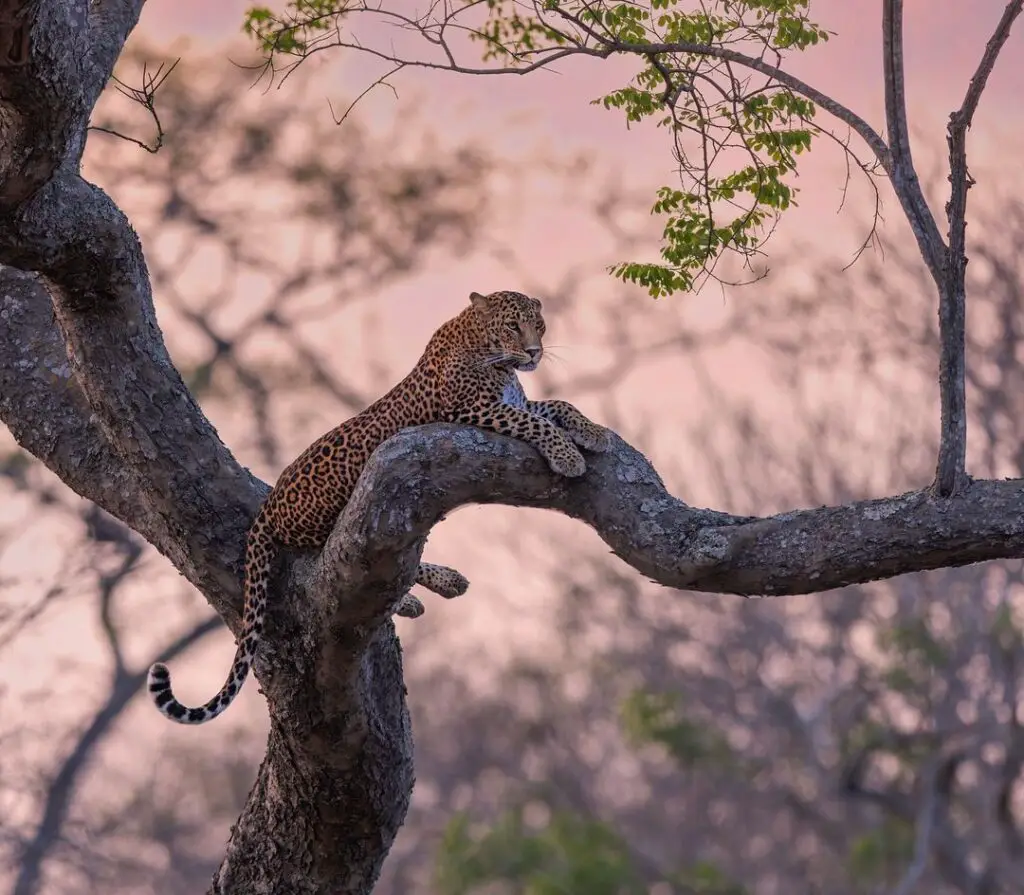
Identifying Features of Leopards
Spots!
Leopards are covered in spots, spots, and more spots! Their distinctive spotted coat is one of the easiest ways to tell them apart from cheetahs. Leopard spots are dark black against a golden or cream-colored coat. The spots are smaller than the cheetah’s and tend to cluster together into rosettes. Leopard spots also continue down onto their legs and belly, unlike the cheetah’s.
Short, Stocky Build
Compared to the cheetah’s sleek and slender body, the leopard has a shorter, stockier build. They have large paws, a broad head, and powerful jaws perfect for dragging heavy prey up into trees. Leopards are powerful swimmers too, unlike cheetahs who avoid water.
Nocturnal Nature
Leopards are nocturnal creatures, meaning they are most active at night. During the day, they rest in trees or dense brush. Cheetahs, on the other hand, are diurnal and hunt during the day. So if you spot a big cat prowling around after dark, chances are it’s a leopard!
Excellent Tree Climbers
Leopards are excellent climbers and often drag their kills into trees to keep them safe from scavengers. Their sharp, retractable claws give them a firm grip, and they move through the trees with ease. Cheetahs, however, cannot climb trees due to their non-retractable claws.
Whether it’s their distinctive spots, stocky build, nocturnal nature or climbing skills, leopards have many unique features that set them apart from cheetahs. Once you know what to look for, telling these big cats apart is a snap!
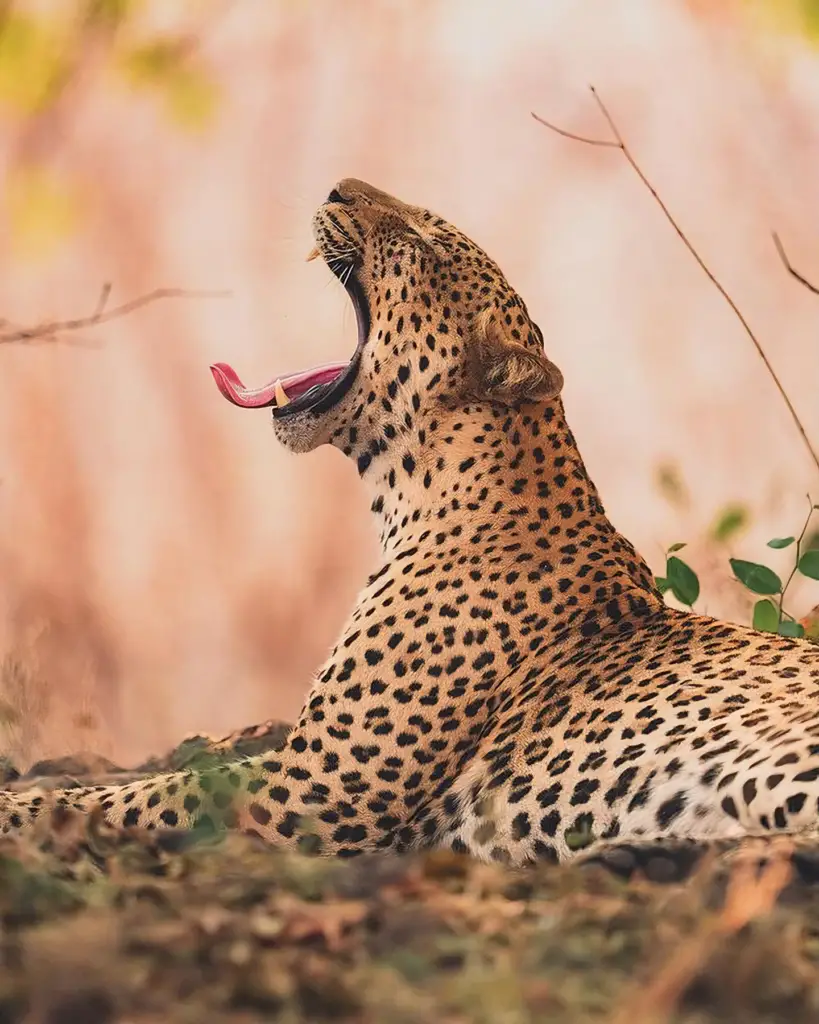
Identifying Features of Cheetahs
Cheetahs are stunning big cats that can reach speeds of up to 75 miles per hour in short bursts, making them the fastest land animal on the planet! Their distinctive spotted pattern and long, slender body make them easily recognizable. Let’s explore some of the characteristics that make cheetahs stand out.
Distinctive Markings
A cheetah’s spots are unlike any other big cat. They have small, solid black spots instead of the rosette patterns seen on leopards and jaguars. Their spots also continue down the length of their tail. Cheetahs are the only big cats with spots on their tail, so this is an easy way to identify them.
Lean and Lithe
Cheetahs have a very slim, lightweight body that allows them to run at high speeds. They are smaller in size compared to other big cats. An adult cheetah weighs 65 to 140 pounds, while an adult leopard can weigh up to 175 pounds. Cheetahs have a small head, long legs, and a flexible spine that acts like a spring while running. Their lightweight body and long, powerful legs give them their speed and agility.
Claws that Don’t Retract
Cheetahs have non-retractable claws that provide extra grip when running and capturing prey at high speeds. Their claws are more dog-like than other cats. The claws provide traction like cleats, allowing cheetahs to make quick turns while sprinting without sliding. The claws are always visible, even when the paw is relaxed.
Cheetahs are truly remarkable animals worthy of admiration and conservation. Their distinctive features and natural speed and power have captivated people for centuries. Take the time to appreciate cheetahs for their uniqueness and do your part to support organizations working to ensure the future of these wild cats.
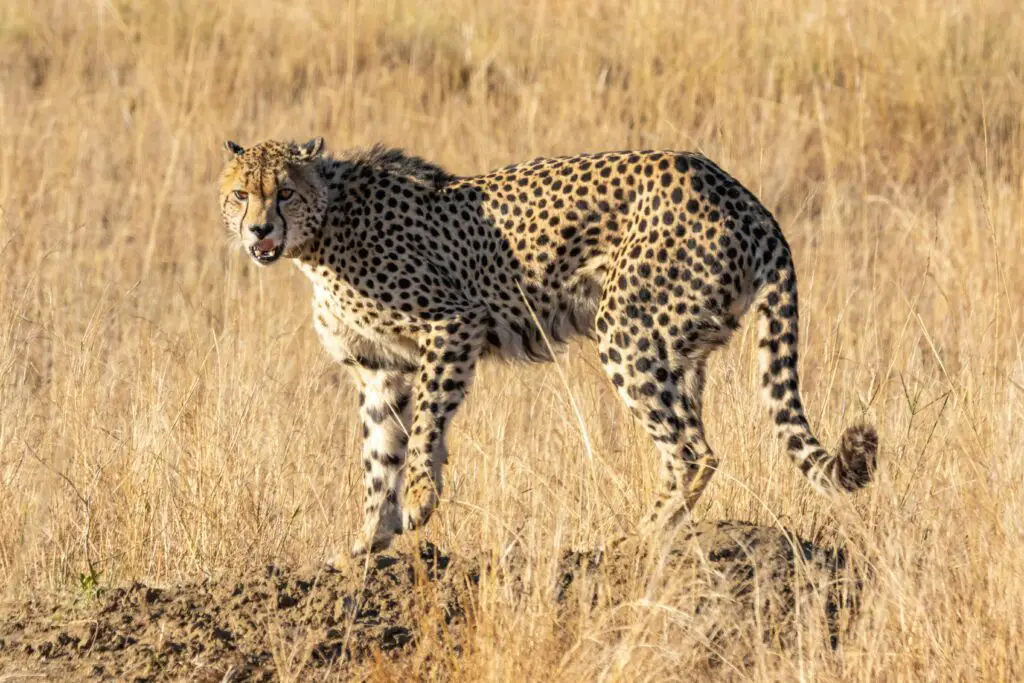
Habitat and Behavior Differences
When it comes to habitat, leopards and cheetahs are quite different! Leopards prefer dense forests, scrubland and mountainous areas where they can hide out, while cheetahs inhabit open grasslands and savannas.
Home Sweet Home
Leopards are solitary creatures and claim large territories for themselves in the bush. They are excellent climbers and swimmers, using trees as lookout points to scout for prey before pouncing. Cheetahs, on the other hand, live in small family groups on the open plains. They rely on speed over stealth, chasing down gazelles and antelope over short distances.
Social Scene
While leopards avoid each other, female cheetahs raise their cubs together in a crèche before the young males disperse to find their own territories. Cheetah cubs learn vital hunting skills by watching their mothers stalk and chase prey. Play fighting with their siblings also helps build strength and coordination.
Leopard cubs, however, stay with their mother for up to two years before becoming independent. They hone their hunting techniques through trial-and-error in the dense bush, developing the patience and cunning that leopards are known for.
On the Prowl
When it comes to hunting, leopards are opportunistic predators that hunt over 30 different species, while cheetahs almost exclusively prey on small to mid-sized antelope like Thomson’s gazelles. Leopards are powerful swimmers and climbers, grabbing prey from trees or even diving into rivers to catch fish! Cheetahs, on the other hand, rely entirely on their speed and acceleration to run down prey in short sprints over open ground.
While these big cats may look similar at first glance, take a closer look at their habitat and behavior and you’ll spot some key differences. Leopards are solitary stalk-and-ambush predators that inhabit dense forests, while cheetahs are speedy open-grassland hunters that live and raise their young together in family groups. Each cat is uniquely suited to its environment!
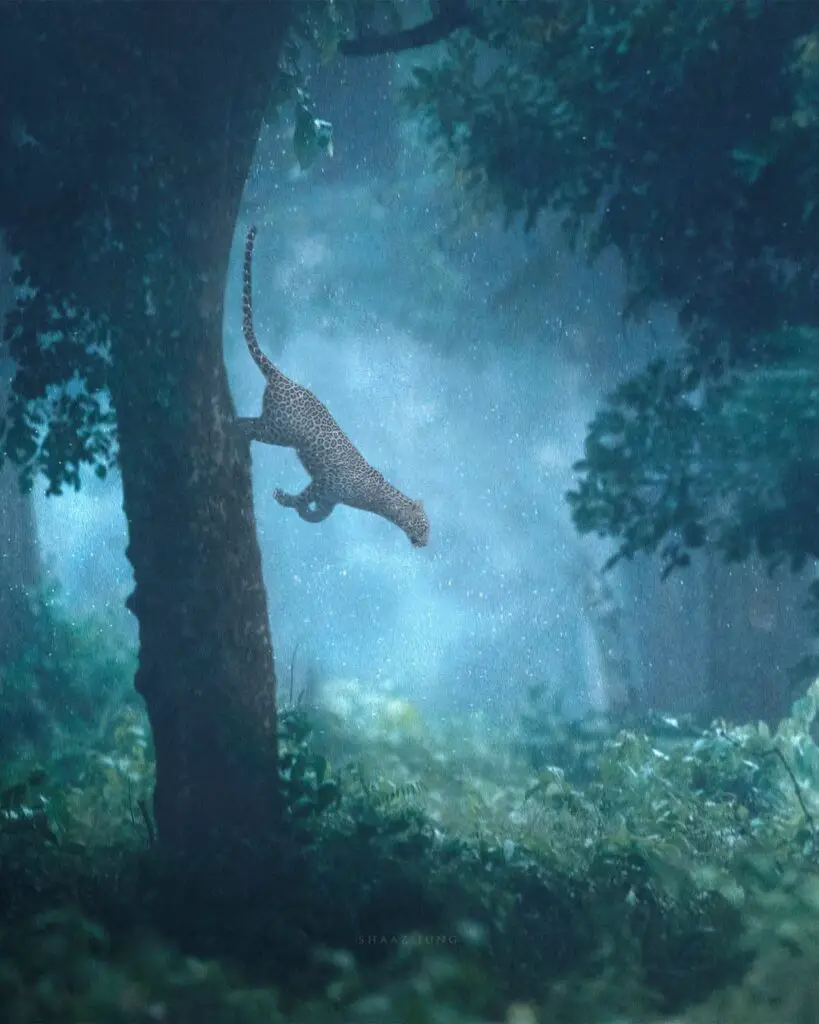
Leopards vs Cheetahs: FAQs
Cheetahs and leopards—they’re both big cats, so how do you tell them apart? Let’s dive into some frequently asked questions to solve this spotted mystery once and for all!
Do they have different fur patterns?
Absolutely! The easiest way to distinguish these felines is by their coats. Cheetahs have solid, evenly spaced spots, while leopards have rosette patterns with spots inside spots. Cheetah spots are also smaller, solid black dots rather than the larger, jagged-edged spots of leopards.
Do they live in different places?
You bet. Cheetahs inhabit the open grasslands and savannas of Africa and Asia, while leopards prowl the forests and jungles. Leopards are amazing climbers and can often be found lounging in trees, whereas cheetahs tend to stay on the ground.
Do they hunt different prey?
Yes, again. Cheetahs are sprinters that chase down fleet-footed prey like gazelles, impalas and hares on the open plains. Leopards are stealthy ambush hunters that pounce on whatever they can grab in the forest, such as monkeys, wild pigs, rodents, and even small deer.
Are they different sizes?
Cheetahs are generally taller and more slender, while leopards are stockier and more muscular. An adult cheetah weighs 60-140 lbs, while a leopard tips the scales at 90-200 lbs. Cheetahs are the fastest land animals and rely on their speed, so they have a lighter build. Leopards are powerful swimmers and climbers, so they need more bulk and strength.
Now you’re ready to spot the difference between these stunning big cats. Whether it’s their fur, habitat, hunting style or size, cheetahs and leopards have unique characteristics that set them apart. Keep your eyes out on your next African safari—you’ll be identifying these felines in no time!

